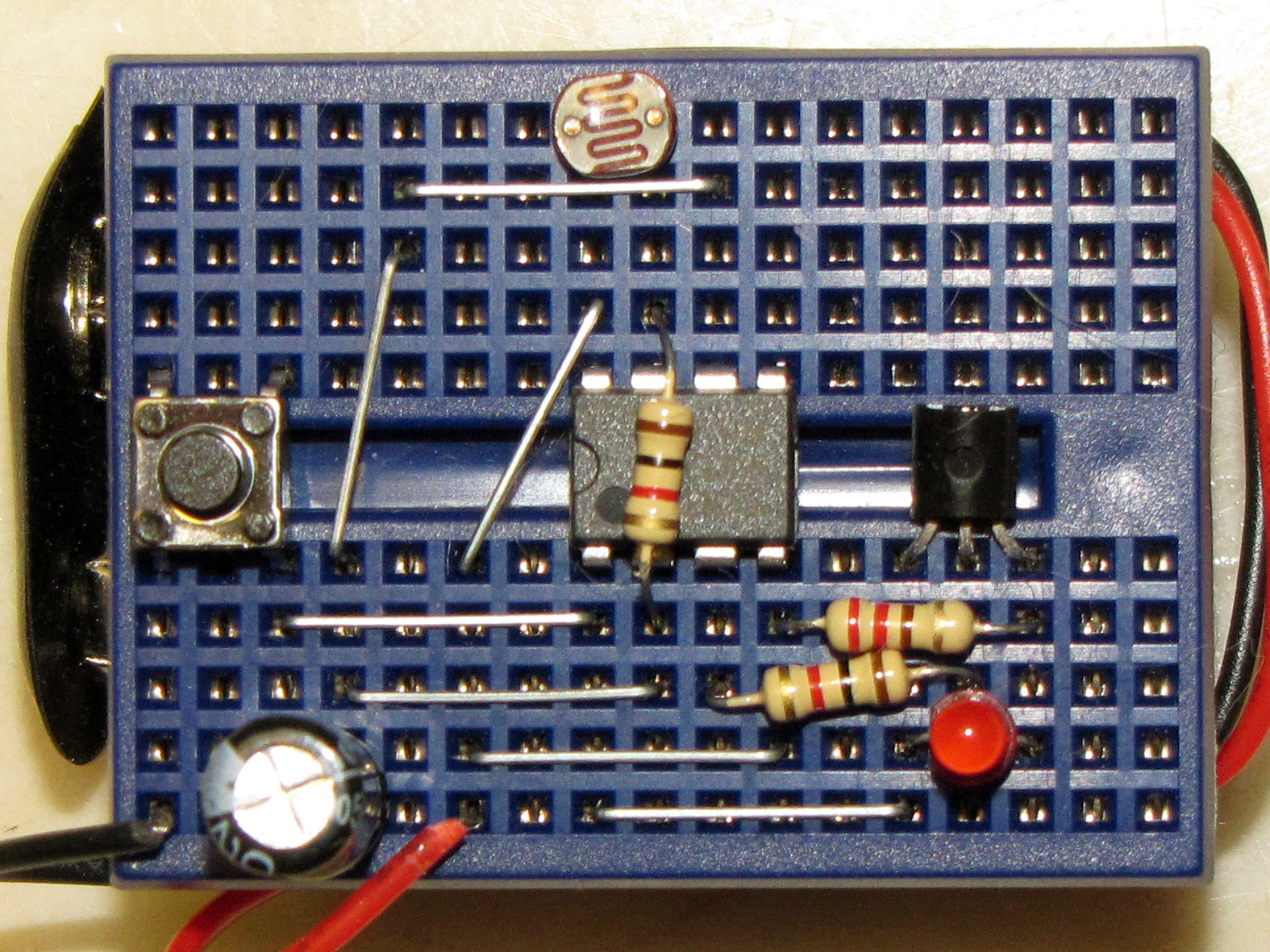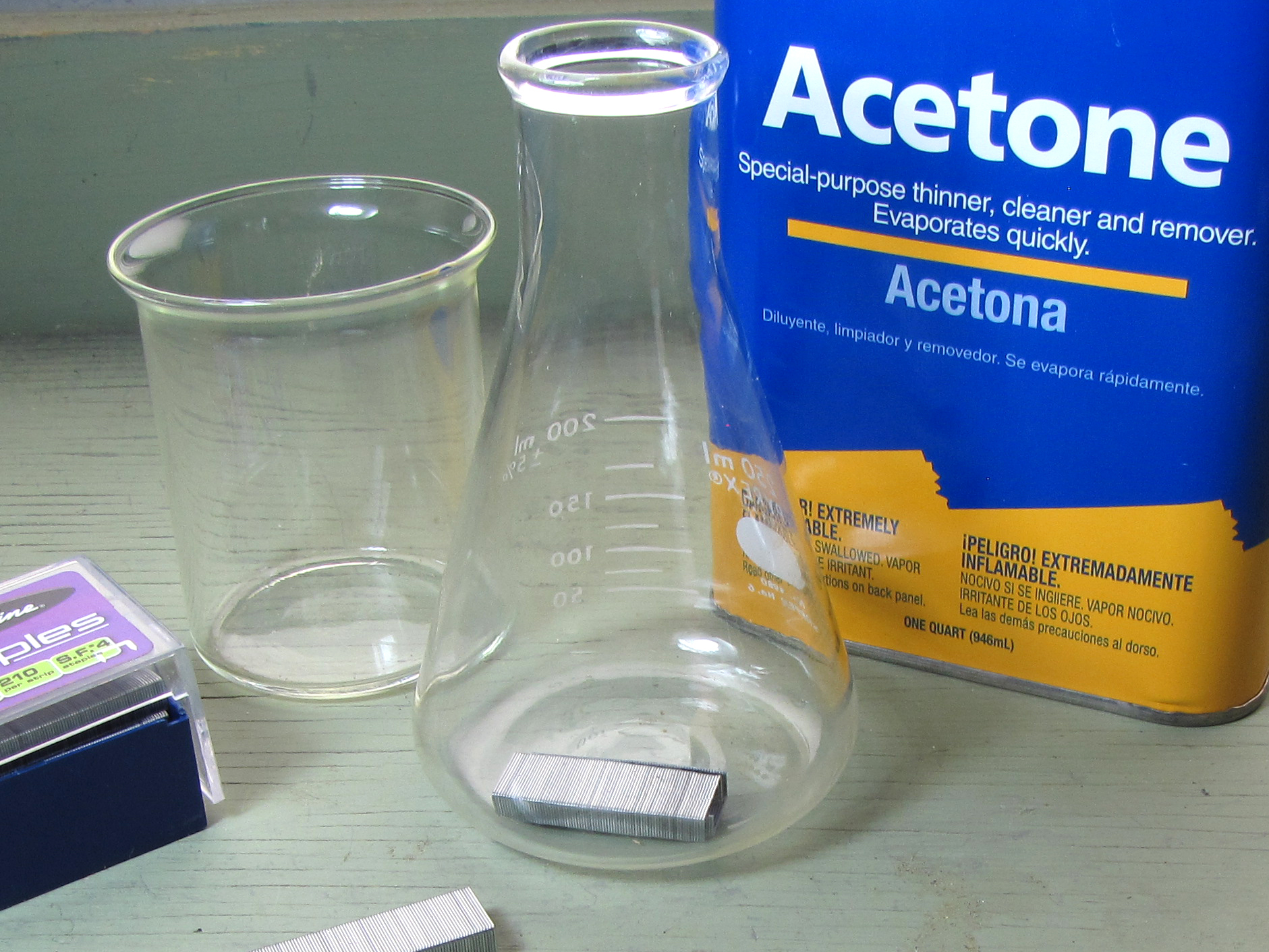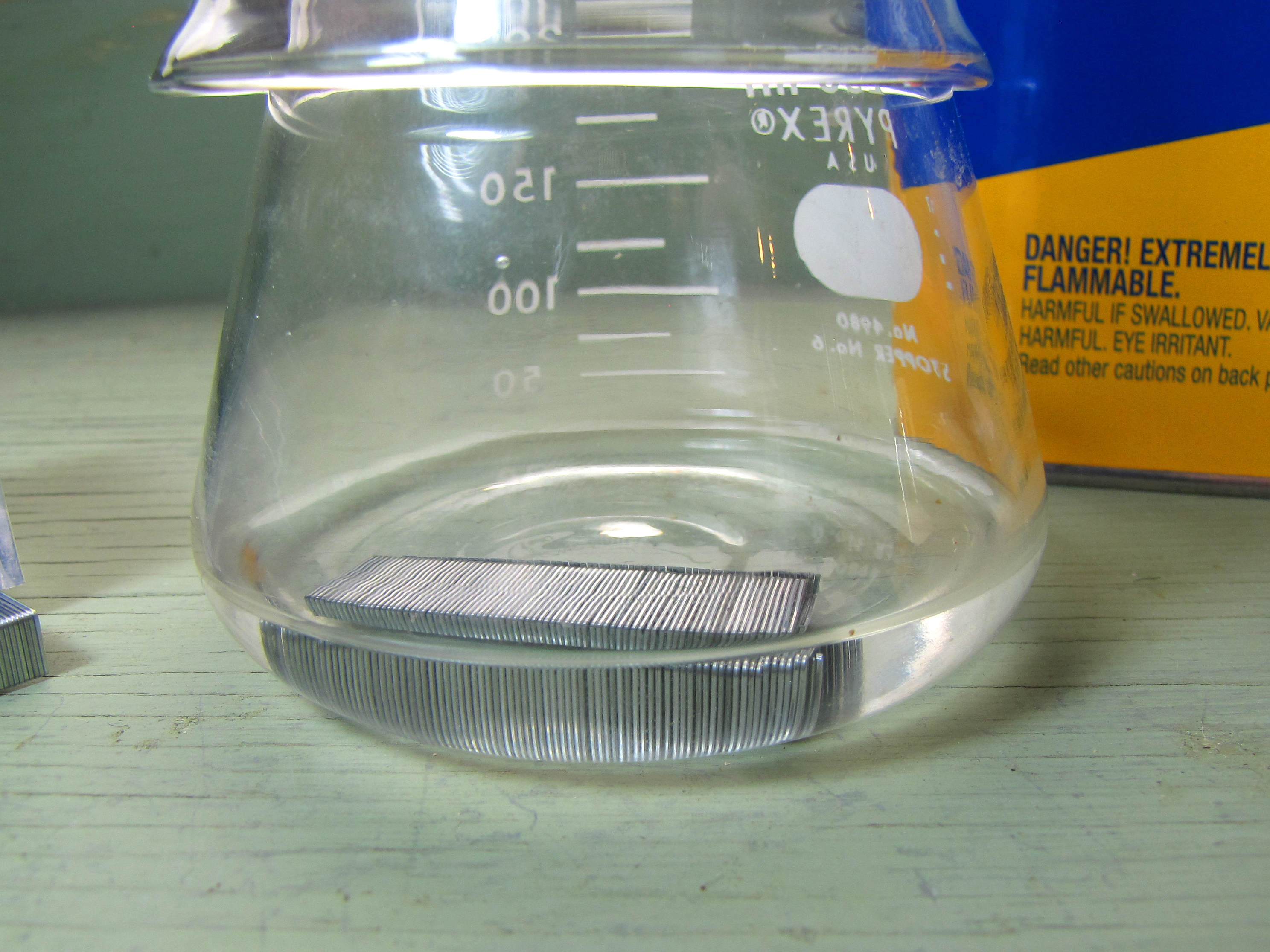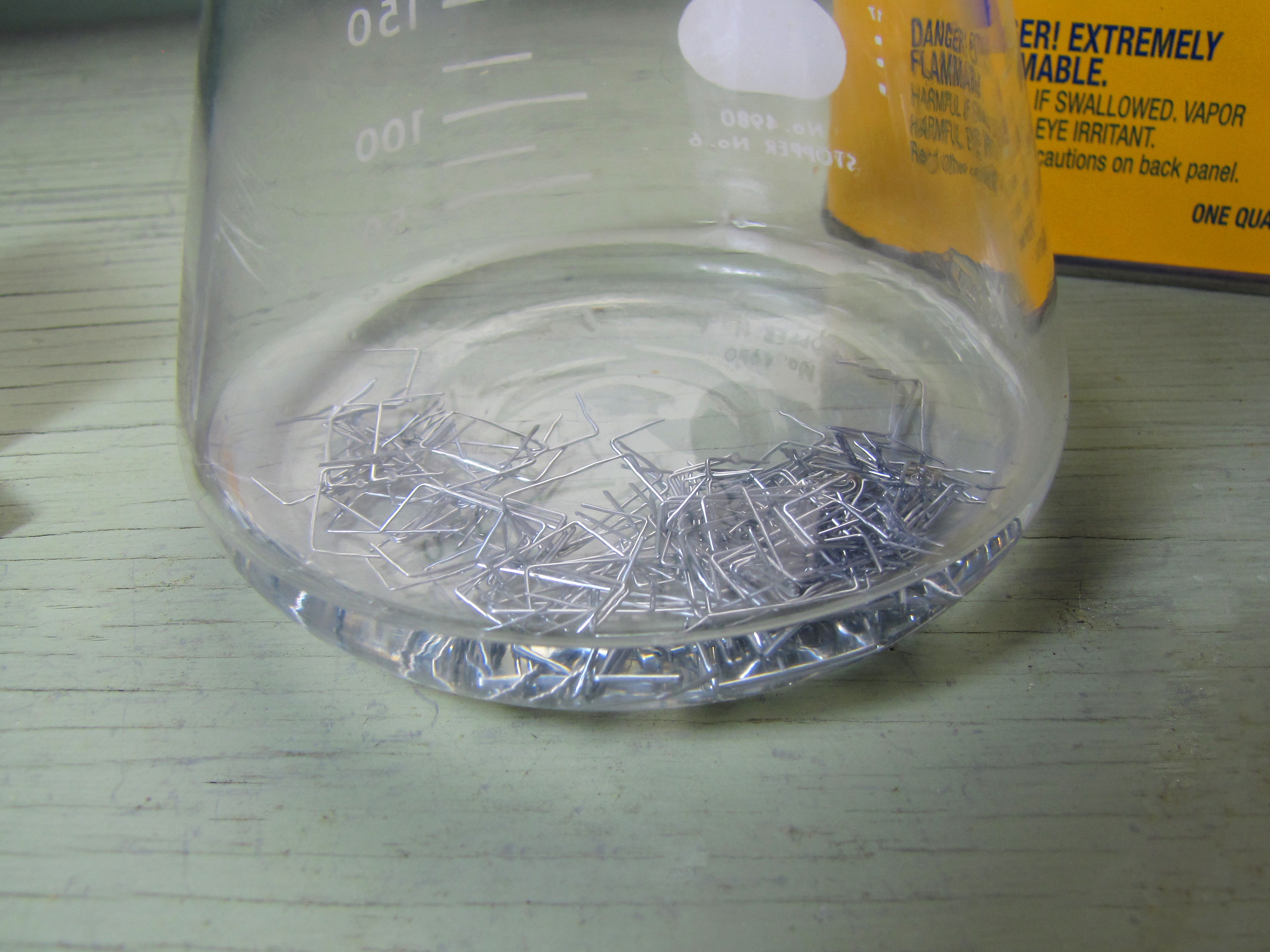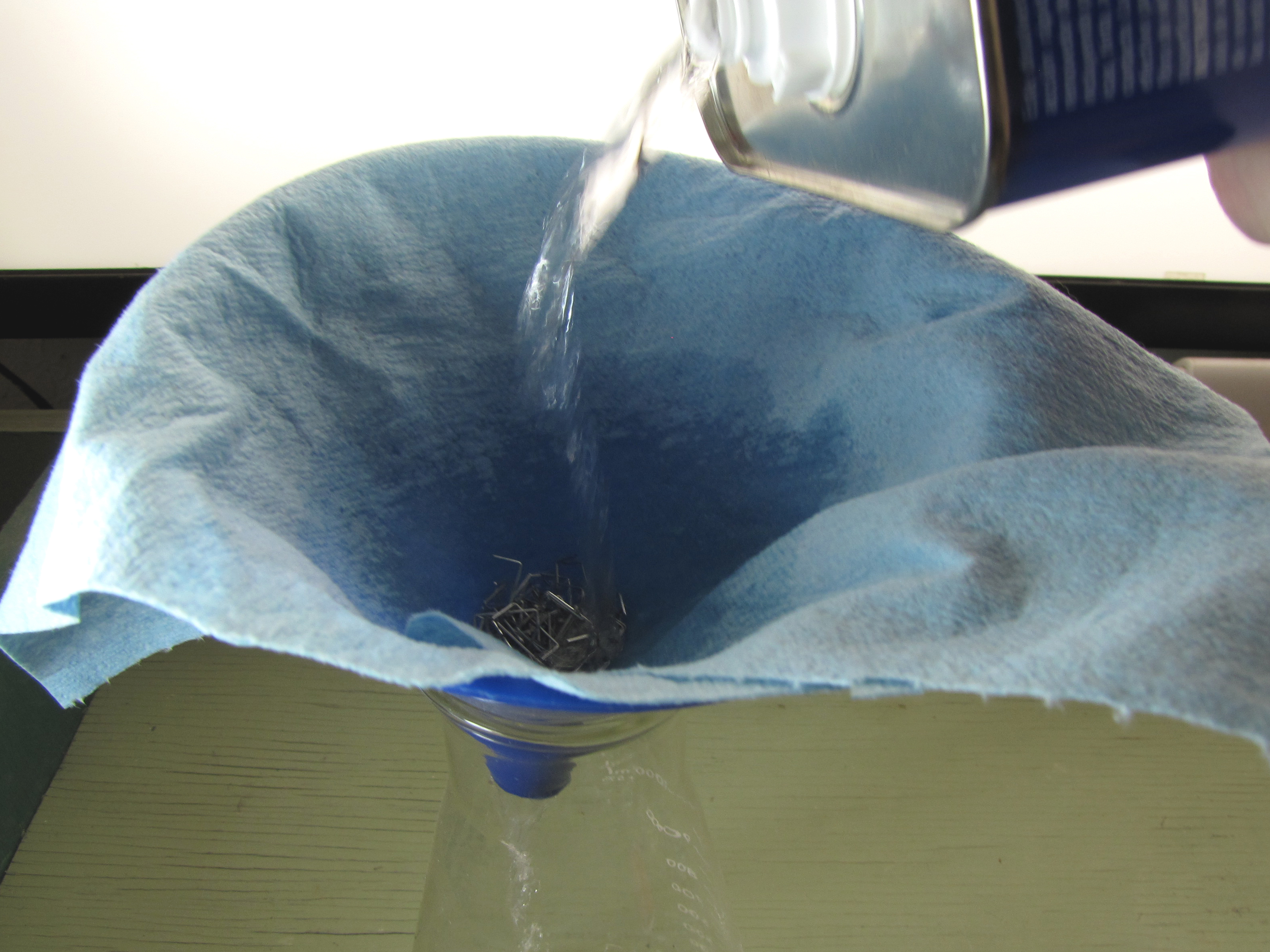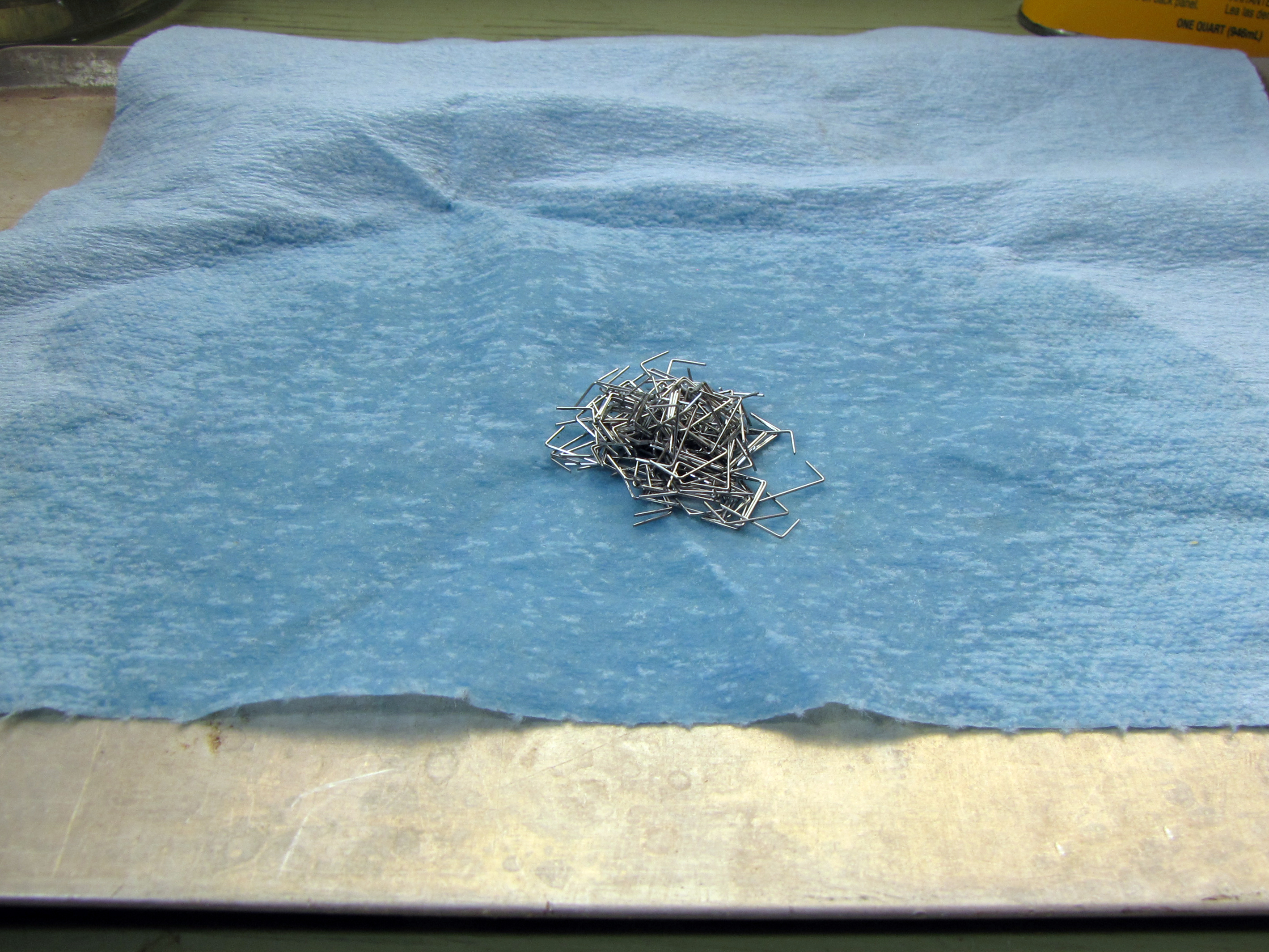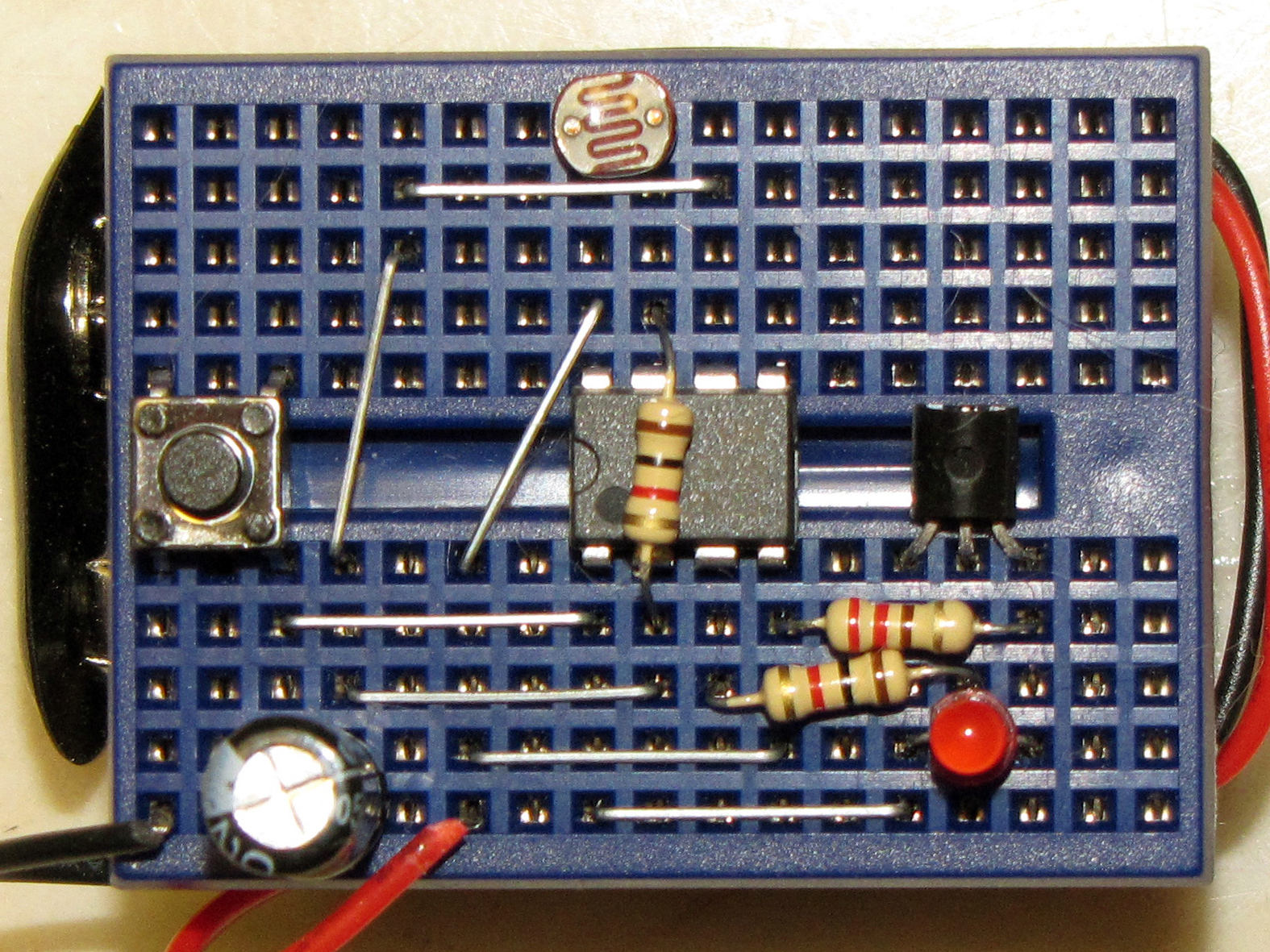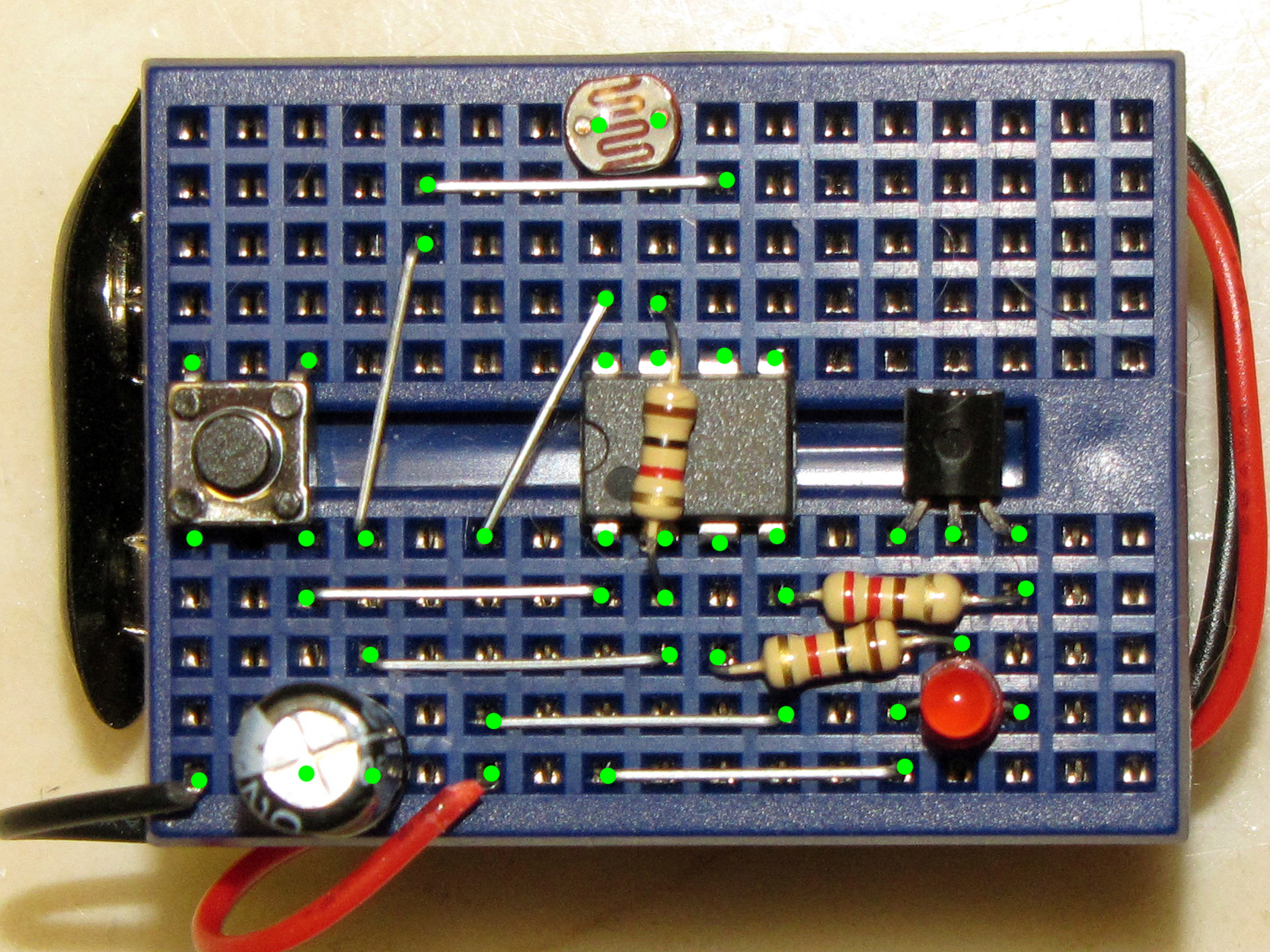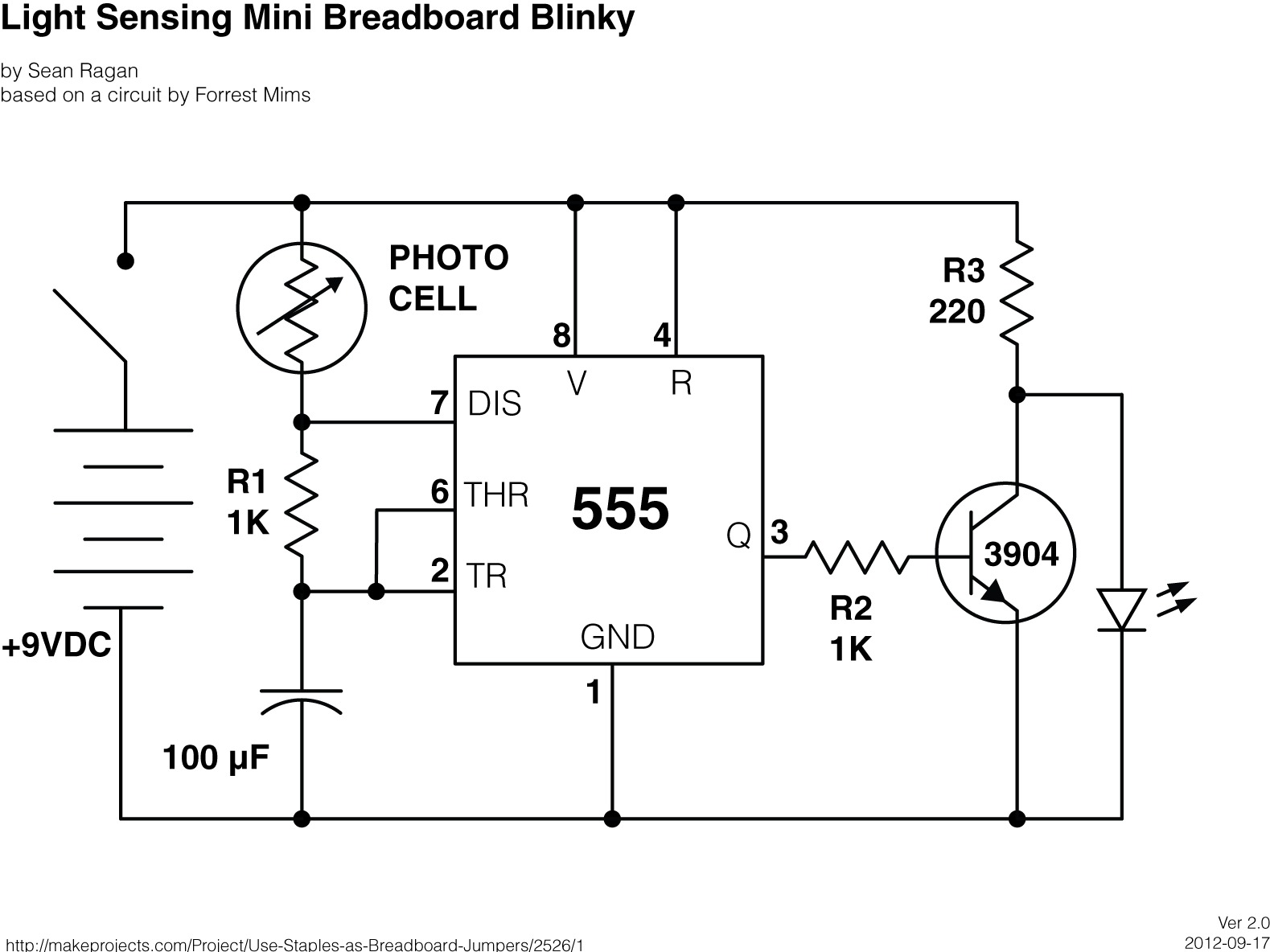Recently, we’ve been brainstorming ideas for a breadboarding workshop to put on at Maker Faire and other events. Hoping to save participants the tedium of cutting and stripping their own jumper wires (and the cost of providing readymade jumpers) we hit on the idea of using staples. I first read about this hack on Instructables, awhile back, and was excited to find a chance to put it to use.
Just one problem: it doesn’t work.
Or, I should say, it didn’t work. At first. Our prototype staple-wired circuit was DOA, and putting a multimeter across one of the staples quickly revealed why. Staples are glued together, at the factory, to make strips, and the glue insulates the metal and keeps them from making solid electrical contact with the breadboard tie points. We tried several staple types and brands and had the same problem with each.
It was Michael Castor who hit on the idea of pre-soaking the staples in acetone, which works great. This treatment not only removes the glue, but causes the strips to fall apart into pristine individual staples. This was an unexpected benefit, as we were expecting to have to keep staplers around so workshop participants could punch out their jumpers one at a time. Now we can just provide bowls full of acetone-washed staples at every station.


